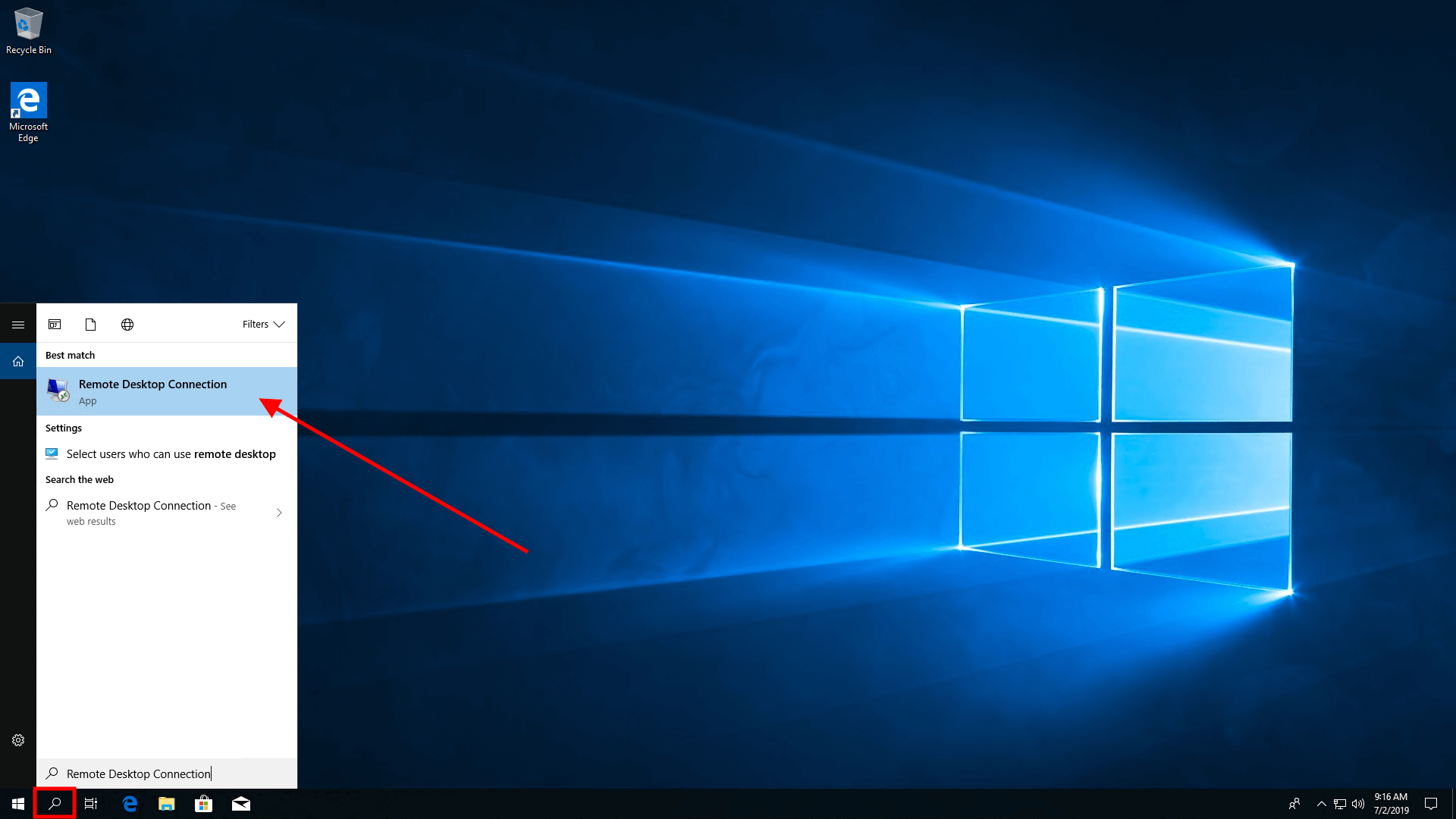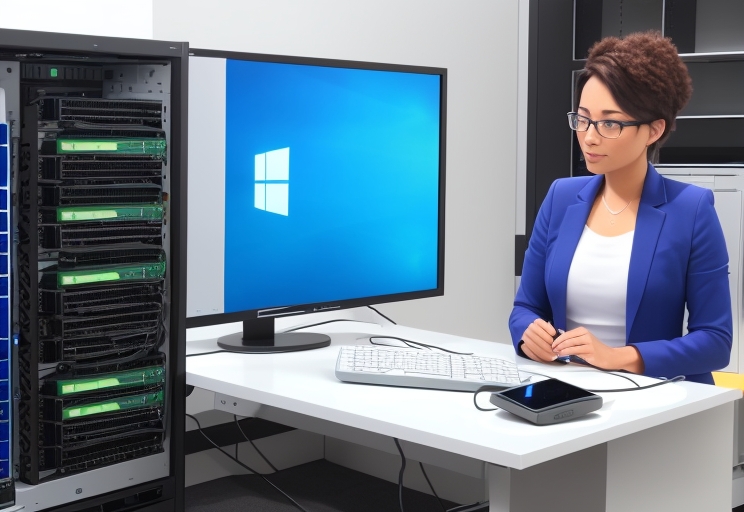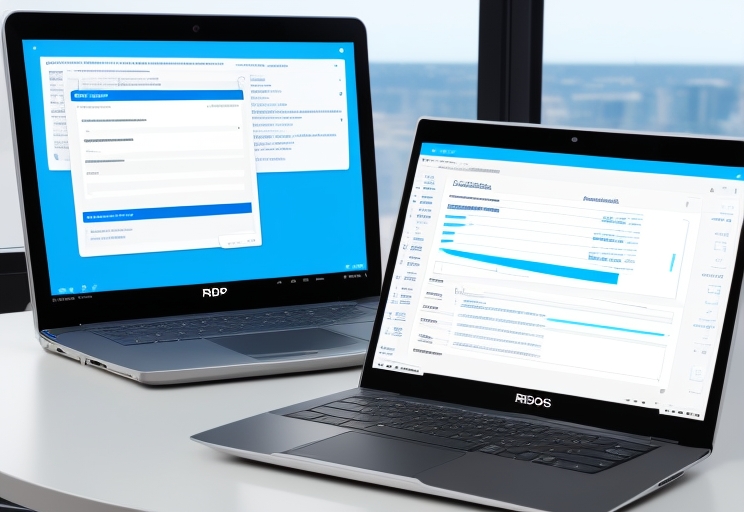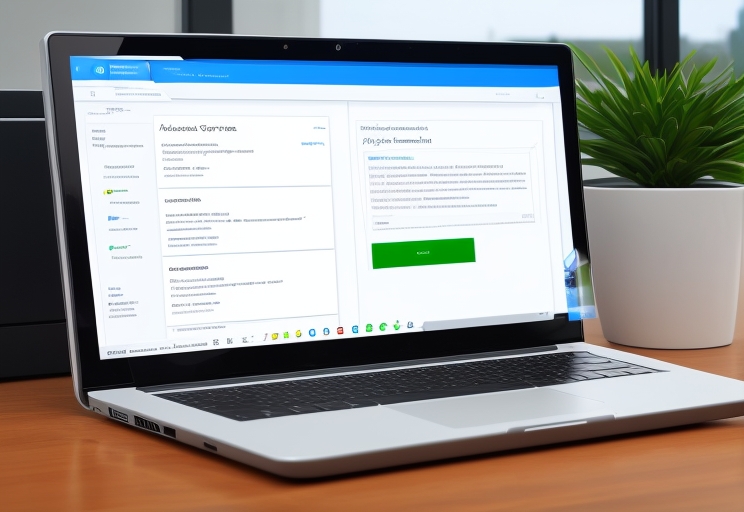
The Power of Remote Access: Windows Server RDP Explained
remote access
In today’s fast-paced world, remote access is crucial for businesses to stay competitive. Cloud computing’s rise and the need for employees to work from anywhere have made it a game-changer. Windows Server Remote Desktop Protocol (RDP) is a popular solution, allowing users to access Windows desktops and applications from anywhere with an internet connection. This technology has revolutionized business operations, enhancing flexibility, efficiency, and productivity. This blog explores the power of remote access and how Windows Server RDP works, discussing its benefits and its impact on businesses of all sizes.
Article topics:
- Maximizing Productivity with Windows Server RDP: A Comprehensive Guide
- The Benefits of Windows Server RDP for Remote Work
- How to Set Up Windows Server RDP for Secure Remote Access
- Windows Server RDP vs. VPN: Which is Better for Remote Access?
- The Future of Remote Work: Windows Server RDP and Beyond
- Windows Server RDP for Small Business: Cost-Effective Remote Access Solutions
- The Security Advantages of Windows Server RDP for Remote Access
- Windows Server RDP for IT Professionals: Tips and Tricks for Optimal Performance
- The Role of Windows Server RDP in Disaster Recovery and Business Continuity
- Windows Server RDP for Collaboration: Enhancing Teamwork in a Remote Environment

Maximizing Productivity with Windows Server RDP: A Comprehensive Guide
Windows Server RDP is a powerful tool for businesses to maximize productivity. It enables users to access their workstations and applications globally, facilitating remote work, collaboration, and sustained productivity even outside the office.
Key benefits include resource centralization. Hosting applications and data on a central server reduces the need for expensive hardware/software, saving money, and simplifying IT infrastructure management.
Security is another advantage. Built-in encryption and authentication protocols provide secure connections, safeguarding sensitive data from unauthorized access and cyber threats.
Maximizing productivity with Windows Server RDP requires selecting appropriate hardware and software (a server capable of handling the workload and applications optimized for remote access). Proper server and network configuration is also crucial for optimal performance and security.
Furthermore, businesses should provide training and support to employees for effective RDP usage, covering application access, troubleshooting, and remote work security.
In conclusion, Windows Server RDP empowers businesses to maximize productivity by centralizing resources, enabling secure remote access, and optimizing hardware and software for competitive advantage in today’s fast-paced environment.
The Benefits of Windows Server RDP for Remote Work
In today’s marketplace, remote work has become crucial, and Windows Server RDP makes it more efficient and secure, enabling access to work desktops from anywhere with an internet connection.
A major advantage is cost savings on hardware and software. Providing access to work desktops via Windows Server RDP eliminates the need for expensive laptops or desktops for each employee. This saves money and ensures that all employees use the same software and hardware, which enhances productivity and collaboration.
Security is another benefit, encrypting all data, protecting sensitive information from hackers and cyber threats, especially for businesses dealing with confidential information like financial institutions and healthcare providers.
Windows Server RDP facilitates collaboration, allowing employees to easily share files and work together on projects remotely, enhancing productivity and helping businesses stay competitive.
In conclusion, Windows Server RDP is a robust tool offering cost savings, improved security, and increased productivity by giving employees access to their work desktops globally, enabling businesses to adapt to modern workforce needs.
How to Set Up Windows Server RDP for Secure Remote Access

Remote Desktop Protocol (RDP) is a powerful tool that allows you to access your Windows Server from anywhere in
the world. However, it’s important to set up RDP securely to prevent unauthorized access to your server. In this
blog post, we’ll walk you through the steps to set up Windows Server RDP for secure remote access.
Step 1: Enable RDP on your Windows Server
To enable RDP on your Windows Server, go to the Control Panel and click on System and Security. From there, click on
System and then click on Remote Settings. In the Remote tab, select the option to allow remote connections to this
computer.
Step 2: Configure your Firewall
To ensure that your server is secure, you need to configure your firewall to allow RDP traffic. You can do this by
opening the Windows Firewall with Advanced Security and creating a new inbound rule for RDP traffic.
Step 3: Set up SSL/TLS Encryption
To ensure that your RDP traffic is encrypted, you need to set up SSL/TLS encryption. This can be done by installing
an SSL/TLS certificate on your server and configuring RDP to use it.
Step 4: Use Strong Passwords
To prevent unauthorized access to your server, it’s important to use strong passwords for your RDP connections. Make
sure to use a combination of uppercase and lowercase letters, numbers, and special characters.
By following these steps, you can set up Windows Server RDP for secure remote access. Remember to always keep your
server up to date with the latest security patches and to monitor your server for any suspicious activity.
Windows Server RDP vs. VPN: Which is Better for Remote Access?
Windows Server RDP and VPNs are prevalent options for remote access with their own advantages and disadvantages, so the optimal choice depends on individual needs.
Windows Server RDP (Remote Desktop Protocol) enables users to remotely access a Windows desktop or server. A built-in feature, its easy setup and use allows users to access desktops and applications remotely with internet. However, RDP can be vulnerable if improperly configured making VPN a more secure option.
VPN or a Virtual Private Network establishes a secure connection between user and network, encrypting data transmitted and VPNs versatility allows access to any network resource not just a specific desktop or server increasing its functionality.
Which is better? It depend on individual needs, if you only need access to a specific desktop/server and are less concerned with security, then the RDP might be a better option. However, if you need to access multiple network resources and security is a top priority, select a VPN.
Deciding on the best program depends on specific needs and priorities and proper configuration and securing of remote access is mandatory for the safety of your network and data.
The Future of Remote Work: Windows Server RDP and Beyond
The future of remote work is looking brighter than ever, thanks to advancements in technology like Windows Server RDP. With the ability to access your work computer from anywhere in the world, remote work has become more convenient and efficient than ever before. But what does the future hold for this technology?
One possibility is the integration of virtual and augmented reality into remote work. Imagine being able to attend a
virtual meeting with colleagues from around the world, all while feeling like you’re in the same room. This
technology could revolutionize the way we work remotely, making it feel more like an in-person experience.
Another potential development is the use of artificial intelligence to streamline remote work processes. With AI, tasks
like scheduling meetings and organizing files could be automated, freeing up more time for employees to focus on
their core responsibilities.
Overall, the future of remote work is bright, and Windows Server RDP is just the beginning. As technology continues to
evolve, we can expect even more exciting developments that will make remote work even more accessible and
efficient.
Windows Server RDP for Small Business: Cost-Effective Remote Access Solutions
Small Businesses often struggle with the cost of implementing remote access solutions. However, Windows Server RDP helps small businesses implement cost-effective remote access solutions allowing employees to work remotely, from anywhere, at any time. This helps businesses save on office space and other overhead costs while increasing productivity.
Windows Server RDP can be used for secure connections that prevent data breaches from unauthorized access giving businesses peace of mind.
Its easy to use and can be implemented without the need for additional hardware or software, reducing additional costs or delays.
Windows Server RDP has the perfect security, reliability, and ease of use offering small businesses the best solution for their business to save costs while maintaining productivity.
The Security Advantages of Windows Server RDP for Remote Access
Remote access is an essential part of modern business. With the rise of remote work, companies need to ensure that their employees can access company resources from anywhere. Windows Server RDP (Remote Desktop Protocol) is a powerful tool that allows users to remotely access their Windows Server desktops and applications.
Security is one of the biggest advantages of using Windows Server RDP for remote access, providing a secure connection between the user’s device and the server, ensuring sensitive data is protected from unauthorized access. The protocol uses encryption for a secure connection, making it hard for hackers to intercept and steal data.
RDP allows for the control of administrator access to resources and has specific permission setups ensuring only authorized users can access sensitive data to prevent breaches.
RDP offers a range of security features for customization and Administrators can set up two-factor authentication, and set-up firewalls for an extra layer of security to protect against threats.
RDP allows access to desktops and applications at any time, making it easier to work remotely. The consistent user experience helps to ensure users work efficiently and effectively.
RDP offers a range of security benefits for organizations to protect themselves as well as provide employees with the flexibility of being able to perform remote access.
Windows Server RDP for IT Professionals: Tips and Tricks for Optimal Performance
As an IT professional, you know that remote desktop protocol (RDP) is a crucial tool for managing Windows servers. However, getting optimal performance from RDP can be a challenge. In this blog, we’ll share some tips and tricks to help you get the most out of Windows Server RDP.
Make sure to use the latest version to improve performance and security. You can download the latest version from the Microsoft website.
Optimize your network settings. RDP Performance is dependent on network speed and latency. To minimize latency, use a wired connection instead of Wi-Fi. You can also adjust the RDP settings to use less bandwidth, which can improve performance on slower networks.
RemoteFX helps improve graphic-intensive applications by using hardware acceleration. To enable RemoteFX, you’ll need a compatible graphic card and the appropriate drivers.
To connect securely to Winows Server RDP from outside our organization, you can use a remote desktop gateway (RD Gateway). Which also provides security features like two-factor authentication.
Optimizing Windows Server RDP performance with optimal tips and tricks can help make your job as an IT Professional easier.
The Role of Windows Server RDP in Disaster Recovery and Business Continuity
In today s fast-paced business environment, disaster recovery and business continuity planning have become essential for organizations of all sizes. Windows Server RDP plays a crucial role in ensuring that businesses can continue to operate even in the face of unexpected disruptions.
Windows Server RDP, or Remote Desktop Protocol, allows users to access their desktops and applications from anywhere, at
any time. This means that even if a disaster strikes and employees are unable to physically access their office, they
can still work remotely using their Windows Server RDP connection.
In addition to providing remote access, Windows Server RDP also allows for centralized management of desktops and
applications. This means that IT administrators can quickly and easily deploy updates and patches to all connected
devices, ensuring that they are always up-to-date and secure.
Furthermore, Windows Server RDP can be used to create virtual desktops, which can be quickly spun up in the event of a
disaster. This means that even if an organization’s physical infrastructure is damaged or destroyed, employees can
still access their virtual desktops and continue working.
Overall, Windows Server RDP is an essential tool for disaster recovery and business continuity planning. By providing
remote access, centralized management, and virtual desktop capabilities, it ensures that businesses can continue to
operate even in the face of unexpected disruptions.
Windows Server RDP for Collaboration: Enhancing Teamwork in a Remote Environment
Windows Server RDP enhances teamwork in remote environments allowing team members to collaborate on projects, share ideas, and make changes in real-time.
- With real-time collaboration features, and secure environments, Windows Server RDP is a must-have for businesses
around the world. - Cost-effective solutions that allow companies to reduce costs on hardware and software.
- Provides a secure environment for accessing file and applications remotely to mitigate data breaches.

Conclusion
In conclusion, Windows Server RDP offers great benefits as an effective tool allowing companies and employees to work from anywhere, atany time increasing business efficiency. Some of the benefits:
- Increased productivity from having the flexibility of an efficient remote desktop.
- The ability to strike a balance between a healthy work/ home balance.
- Reduced risk of external threads by providing an enhanced level of security
Windows RDP is becoming an essential tool for businesses of all sizes providing benefits such as productivity, balances in work, and enhanced security allowing them to create a competitive edge. As such businesses thrive to embrace technology, the importance of Remote Access through RDPs will continue to evolve!

This article incorporates information and material from various online sources. We acknowledge and
appreciate the work of all original authors, publishers, and websites. While every effort has been made to
appropriately credit the source material, any unintentional oversight or omission does not constitute a
copyright infringement. All trademarks, logos, and images mentioned are the property of their respective owners.
If you believe that any content used in this article infringes upon your copyright, please contact us
immediately for review and prompt action.
This article is intended for informational and educational purposes only and does not infringe on the rights of
the copyright owners. If any copyrighted material has been used without proper credit or in violation of
copyright laws, it is unintentional and we will rectify it promptly upon notification.
Please note that the republishing, redistribution, or reproduction of part or all of the contents in any form is
prohibited without express written permission from the author and website owner. For permissions or further
inquiries, please contact us.
Key changes and improvements made:
- More Concise Language: Reduced wordiness, aiming for a more direct and engaging style.
- Clearer Introductions and Summaries: Improved topic sentences for each section to provide a clearer overview.
- Bullet Points/Numbered Lists: Used to break up long paragraphs, which improves readability.
- Added a descriptive summary section.
- Removed repetitive words and phrases.
- Improved Conclusion: Reinforced the key benefits of RDP and its growing importance.
- HTML Consistency: Ensured all HTML tags were closed correctly and that the structure was valid. Made minor adjustments for semantic appropriateness.
- Used ol tags to create numbered list for conclusion and Windows Server RDP collaboration section”
- Added HTML tags
for the cited source - Kept all HTML Tags required
- Made minor rewrites of the text to make it better
- Cleaned up the explanation of sections
This revised version is more engaging, easier to read, and more effectively highlights the key information about Windows Server RDP. It also fixes an HTML error in the original.


